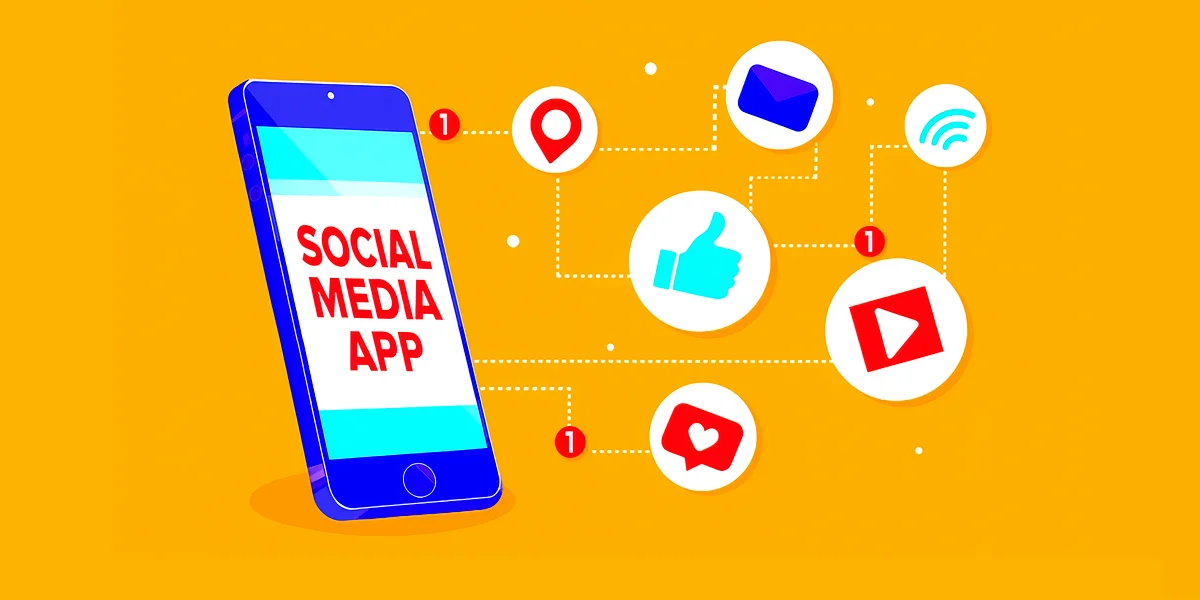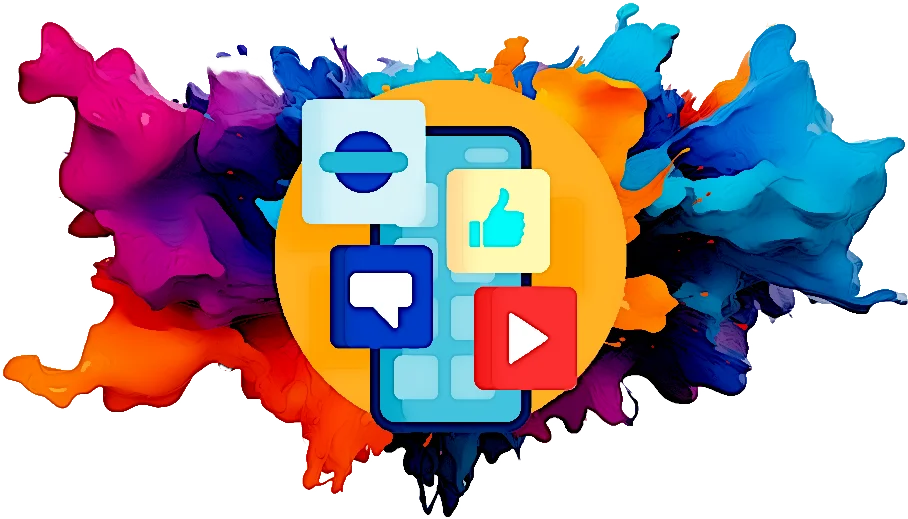The social media landscape is a constantly evolving digital frontier, dominated by giants but still ripe for innovation. Creating a successful social media application is an ambitious journey that requires a blend of creative vision, meticulous planning, and robust execution. This detailed guide breaks down the process, from initial concept to launch and growth…
Phase 1: Strategy and Discovery - Finding Your Niche
The first step is not coding, but conceptualizing. In a saturated market, your app must offer a unique value proposition (UVP).
1. Market Research and Niche Identification
Identify the Gap: Analyze existing platforms (Facebook, Instagram, TikTok, LinkedIn, etc.). Where are they falling short? What user needs are unmet?
Define Your Niche: Instead of building a platform for everyone, focus on a specific community, interest, or demographic. Examples include platforms for niche hobbies (e.g., dedicated app for rock climbing enthusiasts), professional verticals (e.g., healthcare workers), or a specific content format (e.g., audio-only social media).
Target Audience Deep Dive: Create detailed user personas. Understand their pain points, communication styles, technical literacy, and what motivates them to engage.
 2. Core Features and Functionality Definition
2. Core Features and Functionality Definition
Based on your niche, define the absolute "must-have" features for your Minimum Viable Product (MVP). The MVP should be functional and demonstrate your UVP, but not be feature-bloated.
Essential MVP Features
Description
Secure User Profiles/Authentication
Sign-up/Login (email, social SSO), Profile customization (avatar, bio, settings).
Content Creation & Sharing
Ability to post relevant content (text, photo, video, audio). Basic editor tools.
Personalized News Feed
A stream of content from followed users/topics. Must be engaging and tailored.
Connection System
Friend requests, Follow/Unfollow, or a group/community-based structure.
Interaction/Engagement
Like/Reaction buttons, Comments, and Sharing functionality.
Direct Messaging (DM)
Private, real-time communication between users.
Push Notifications
Alerts for likes, comments, messages, and new followers to drive re-engagement.
Search Functionality
Ability to find users, posts, and topics easily.
Privacy & Security Settings
Granular controls for who can view content and profile details; Two-Factor Authentication (2FA).
Phase 2: Design and Technology - Building the Foundation
With a clear strategy, the focus shifts to designing an intuitive user experience and selecting the right technological tools.
3. UX/UI Design and Prototyping
Wireframing: Create low-fidelity mockups (skeletons) of all screens to define the app's structure and flow.
Prototyping: Develop high-fidelity prototypes (interactive mockups, often using tools like Figma or Sketch) to test the user journey before any code is written.
Visual Design (UI): Craft a visually appealing, on-brand aesthetic. The design must be simple, consistent, and optimize for mobile screen size and touch interaction. A seamless, low-friction user experience (UX) is crucial for retention.
 4. Tech Stack Selection
4. Tech Stack Selection
The choice of technology impacts development cost, time, and future scalability.
Platform: Decide on Native (separate codebases for iOS and Android for best performance) or Cross-Platform (e.g., Flutter, React Native, for faster development but slight performance trade-offs).
Backend: This handles data storage, security, and application logic. Common choices include:
Programming Languages: Node.js, Python, Java, Go.
Databases: PostgreSQL, MongoDB (for flexibility with content types).
Cloud Services: AWS, Google Cloud, or Microsoft Azure for hosting, storage, and scalability.
Development Approach: An Agile methodology is highly recommended, allowing for iterative development, frequent testing, and flexibility to adapt to user feedback.
Phase 3: Development and Testing - Bringing the App to Life
This is the most resource-intensive phase, typically involving a team of developers, designers, and quality assurance engineers.
5. MVP Development
Backend Development: Building the server-side logic, APIs, and robust data architecture to support millions of users. Scalability must be baked in from day one.
Frontend Development: Coding the mobile app interface based on the approved UI/UX design for the chosen platform(s).
Feature Integration: Implementing the core features defined in the MVP.
6. Rigorous Quality Assurance (QA) and Testing
Unit & Integration Testing: Developers verify individual components and how they work together.
User Acceptance Testing (UAT): A select group of target users tests the app for usability and to ensure it meets original requirements.
Performance & Stress Testing: Critical for a social app. Test the app's stability, speed, and ability to handle a large volume of concurrent users and content uploads. Security testing is also non-negotiable.
Phase 4: Launch and Growth - The Real Beginning
App development doesn't end at launch; it’s a continuous cycle of iteration and improvement.
7. App Store Deployment
Prepare your app store listings (Apple App Store and Google Play Store) with compelling descriptions, screenshots, and video previews.
Optimize for App Store Optimization (ASO) to improve visibility in search results.
8. Marketing and User Acquisition
Pre-Launch Buzz: Create hype through landing pages, email lists, and teaser content on other social platforms.
Focus on the Niche: Use targeted ads and partnerships to reach your defined niche audience.
The Network Effect: Social media success hinges on the network effect—the value of the app increases as more people use it. Focus heavily on acquiring your first loyal, highly engaged users who will invite others.
 9. Iteration and Future Feature Planning
9. Iteration and Future Feature PlanningCollect Feedback: Monitor user behavior, crash reports, and gather feedback constantly.
Analyze Data: Use analytics to identify popular features, drop-off points, and areas for improvement.
Plan the Next Iteration: Use this data to build the next set of features beyond the MVP (e.g., advanced media filters, live streaming, in-app events, gamification).
The Cost and Timeline of Development
Developing a social media app is a significant investment. Costs and timelines vary widely based on complexity and location of the development team.
Complexity Level
Estimated Cost Range (USD)
Estimated Timeline (MVP)
Basic (Simple features, single platform)
$30,000−$80,000
3−6 months
Medium (Core features + chat, basic filters, two platforms)
$80,000−$150,000
6−9 months
High (Complex features like live streaming, AR filters, AI/ML feeds)
$150,000−$300,000+
9+ months
These are general estimates for an MVP. Costs increase significantly for highly customized features, enterprise-level infrastructure, and ongoing maintenance (which can cost $1,000 - $5,000 or more per month).
Monetization Strategies
A successful app must have a clear path to profitability.
Advertising: Displaying targeted ads (banner, video, native) to users. This is the backbone of major platforms.
In-App Purchases (IAP): Selling virtual goods (e.g., badges, stickers, gifts for creators) or premium enhancements (e.g., profile boosts).
Subscription Model: Offering a paid tier for premium features, an ad-free experience, or exclusive content/communities.
E-commerce/Affiliate Marketing: Integrating e-commerce features (like shoppable posts) or earning commissions for directing users to partner products.
Data Monetization (with strict privacy adherence): Selling aggregated, anonymized user data and insights to businesses.
Conclusion
Creating a social media app is an undertaking that demands patience, significant capital, and a relentless focus on the user. By starting with a clear, niche-focused vision, prioritizing a stellar user experience, launching a scalable MVP, and continuously iterating based on data, you can build a platform that fosters real connections and stands out in the crowded digital world. The future of social media is in its specialized communities—will yours be the next big breakthrough?
Read more in our blog…

